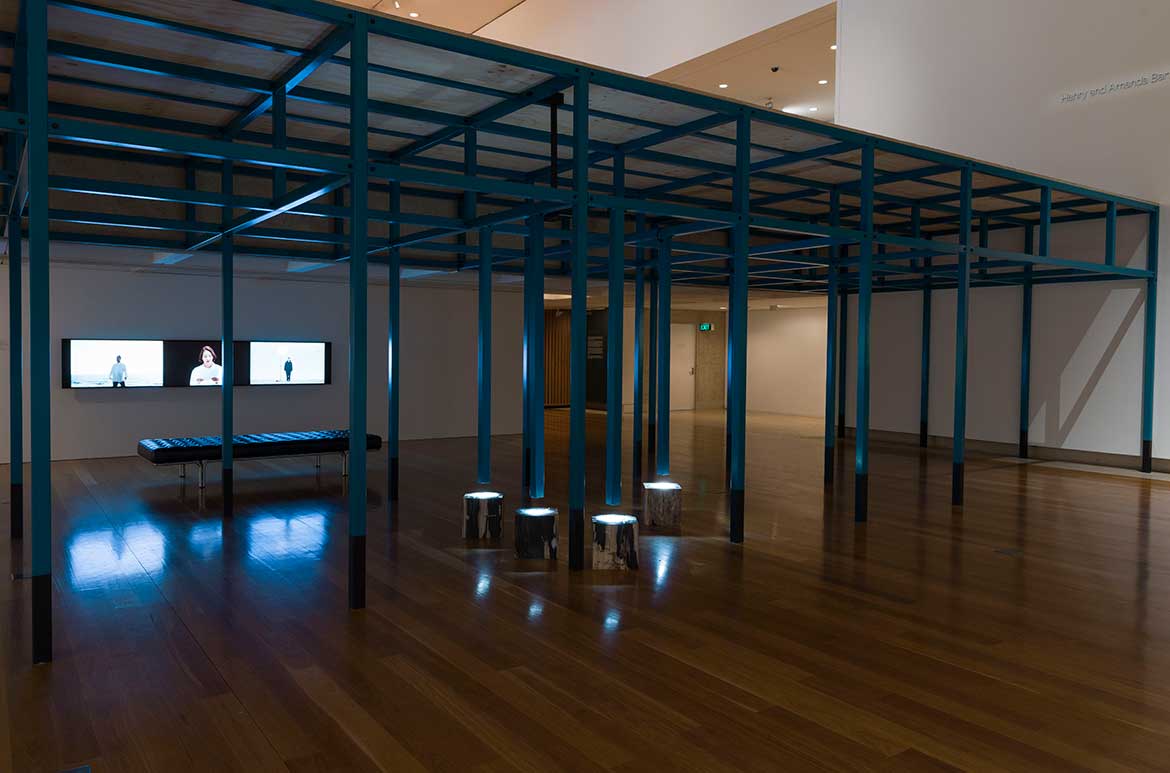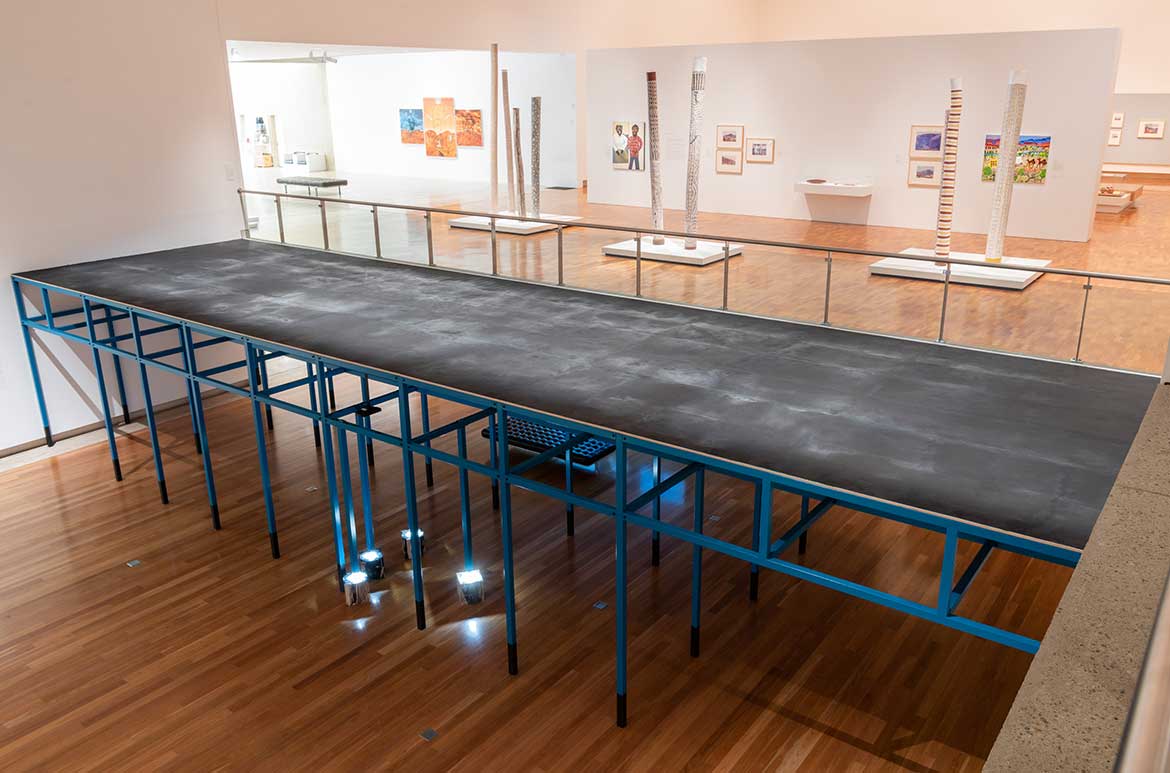Boedi Widjaja’s Black—Hut, Black—Hut 2018–19 is a site-specific architectural installation that formally engages with the architectural space and distinctive materials of the lower level of the Robin Gibson designed Queensland Art Gallery.
Visually the artwork extends the overhang of the Gallery’s mezzanine with a black concrete platform, treated with salt to prompt changes in the surface. The numerous supporting columns of the structure make reference to the type of raised flooring found in various vernacular architectures including the old Queenslander house, the Javanese joglo, and the Malay attap found in the fishing villages of Singapore, and ground-level community spaces of Singapore’s concrete apartment blocks.


Born in Solo City, Indonesia, Widjaja was placed in guardianship arrangements in Singapore at a young age by his Chinese–Indonesian parents, who were fearful for their child’s safety amid heightened ethnic tensions at home. The artist cites the challenges of being separated from his parents, learning new languages, moving homes frequently, and adapting to new cultures as experiences that inform his practice, in particular, his ongoing interrogations of house, home and homeland.

The supporting structure of Black—Hut, Black—Hut is painted turquoise to match a colour found in architecture throughout Solo City, including Widjaja’s childhood home and the majestic Surakarta palace. The underside of the installation also incorporates a ‘sound column’ of recomposed recordings of traditional Javanese gamelan percussion instruments. Base footings made of mineralised, petrified wood complement the concrete above, both being material evidence of transformation and change. The footings are pivoted to have one side facing north, in reference to the direction wooden houses in Brisbane historically tended to be built. The main pillars, based on the sakaguru that support the roof of the joglo, stop just shy of the footings. Centring the work is important to the artist because of his loss of home, but at the same time, unsupportive pillars and invisible sound columns indicate the artist’s degree of distance from a core identity, as is often symptomatic of the diaspora experience.
QAGOMA and Singapore Art Museum (SAM) have co-commissioned Black—Hut, Black—Hut, which will be presented at ‘The 9th Asia Pacific Triennial of Contemporary Art’ (APT9) and the Singapore Biennale 2019. The project marks the first to be developed from a five-year partnership between the two art institutions, established since October 2016. This wide-ranging partnership was forged on common interests to promote and advance the art of the region. Widjaja has been co-commissioned to create a two-part site-specific architectural and sound installation – the first iteration of the work will debut at APT9.
Black—Hut, Black—Hut is shaped by the curatorial and specific contexts of both exhibitions, and stems from the artist’s ongoing artistic interrogations into what constitutes home, and also expands on Widjaja’s earlier explorations and projects. The co-commissioning of an artwork by a Southeast Asian artist – one that draws from the artist’s experiences in Indonesia, Singapore and Australia – is a meaningful first project and an exciting inclusion in APT9.
READ more ABOUT APT9 on our blog / subscribe to youtube TO WATCH BEHIND-THE-SCENES FOOTAGE, EXCLUSIVE INTERVIEWS and performances
Delver deeper into APT9
Qiu Zhijie discusses his art practice while in Brisbane to create Map of Technological Ethics 2018 especially conceived for GOMA’s expansive spaces during ‘The 9th Asia Pacific Triennial of Contemporary Art’ (APT9).
With its origins in calligraphy, Qiu’s practice has evolved through a range of media, idioms and cultural frameworks to arrive at a notion of ‘total art’. His artworks maintain a rich dialogue between Chinese pictorial and literary traditions, contemporary art, philosophy and social engagement.
Qiu’s work is expansive and absorbing, and the substantial scale and narrative richness of his creations is evident in his vast maps, which blend cartographic techniques from multiple disciplines, including geography, history, philosophy, mythology and science.
APT9 publication
APT9 has been assisted by our Founding Supporter Queensland Government and Principal Partner the Australian Government through the Australia Council, its arts funding and advisory body, and the Visual Arts and Craft Strategy, an initiative of the Australian, State and Territory Governments.
Feature image detail: Boedi Widjaja’s Black—Hut, Black—Hut 2018–19
#APT9QAGOMA
